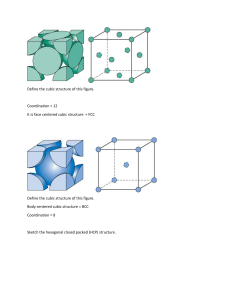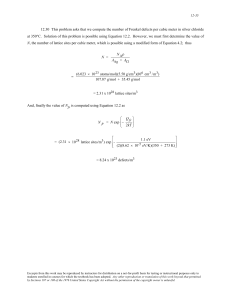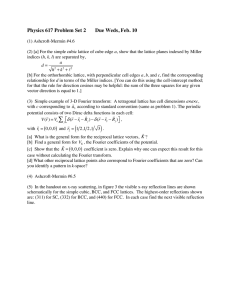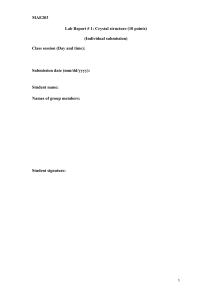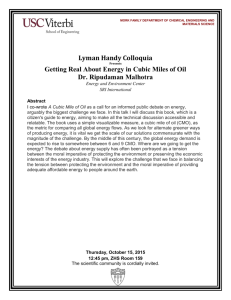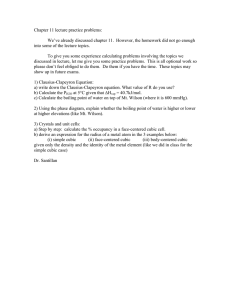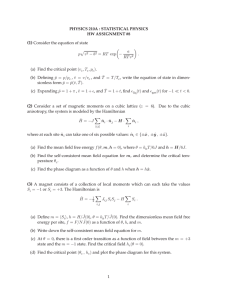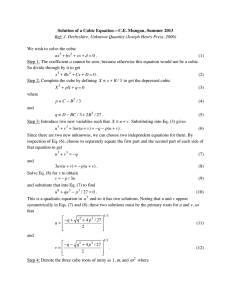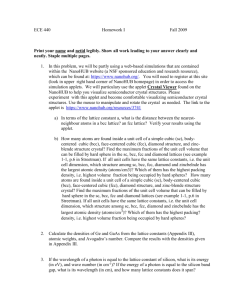PHYSICS 220 : GROUP THEORY PROBLEM SET #4
advertisement
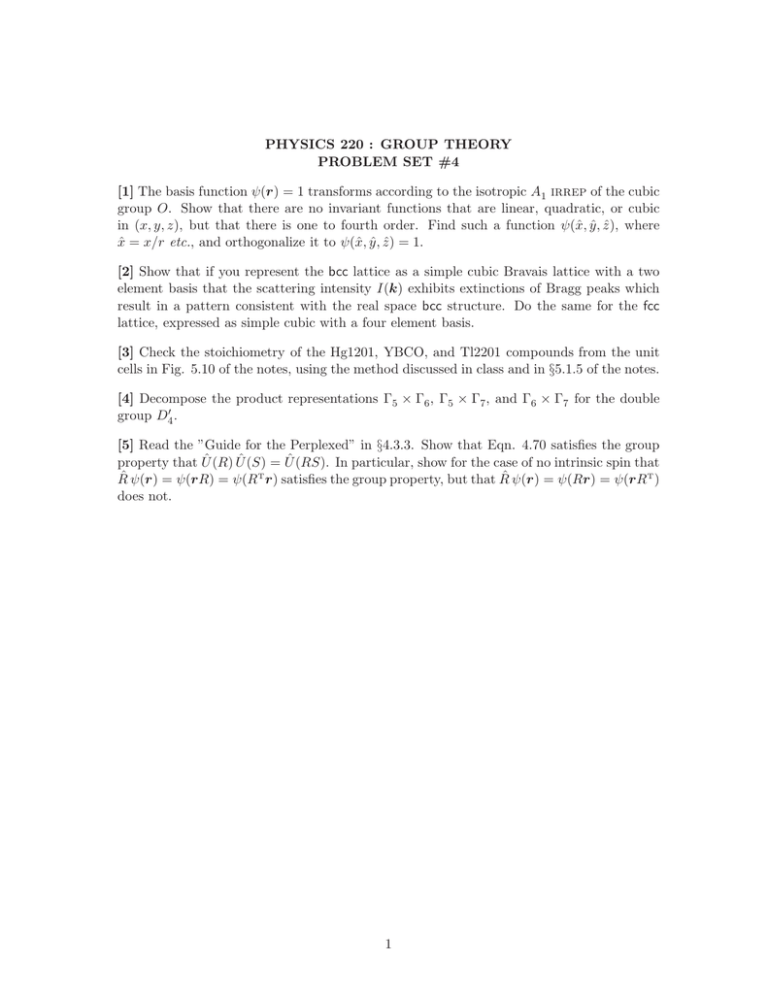
PHYSICS 220 : GROUP THEORY PROBLEM SET #4 [1] The basis function ψ(r) = 1 transforms according to the isotropic A1 irrep of the cubic group O. Show that there are no invariant functions that are linear, quadratic, or cubic in (x, y, z), but that there is one to fourth order. Find such a function ψ(x̂, ŷ, ẑ), where x̂ = x/r etc., and orthogonalize it to ψ(x̂, ŷ, ẑ) = 1. [2] Show that if you represent the bcc lattice as a simple cubic Bravais lattice with a two element basis that the scattering intensity I(k) exhibits extinctions of Bragg peaks which result in a pattern consistent with the real space bcc structure. Do the same for the fcc lattice, expressed as simple cubic with a four element basis. [3] Check the stoichiometry of the Hg1201, YBCO, and Tl2201 compounds from the unit cells in Fig. 5.10 of the notes, using the method discussed in class and in §5.1.5 of the notes. [4] Decompose the product representations Γ5 × Γ6 , Γ5 × Γ7 , and Γ6 × Γ7 for the double group D4′ . [5] Read the ”Guide for the Perplexed” in §4.3.3. Show that Eqn. 4.70 satisfies the group property that Û (R) Û (S) = Û (RS). In particular, show for the case of no intrinsic spin that R̂ ψ(r) = ψ(rR) = ψ(RT r) satisfies the group property, but that R̂ ψ(r) = ψ(Rr) = ψ(rRT ) does not. 1
